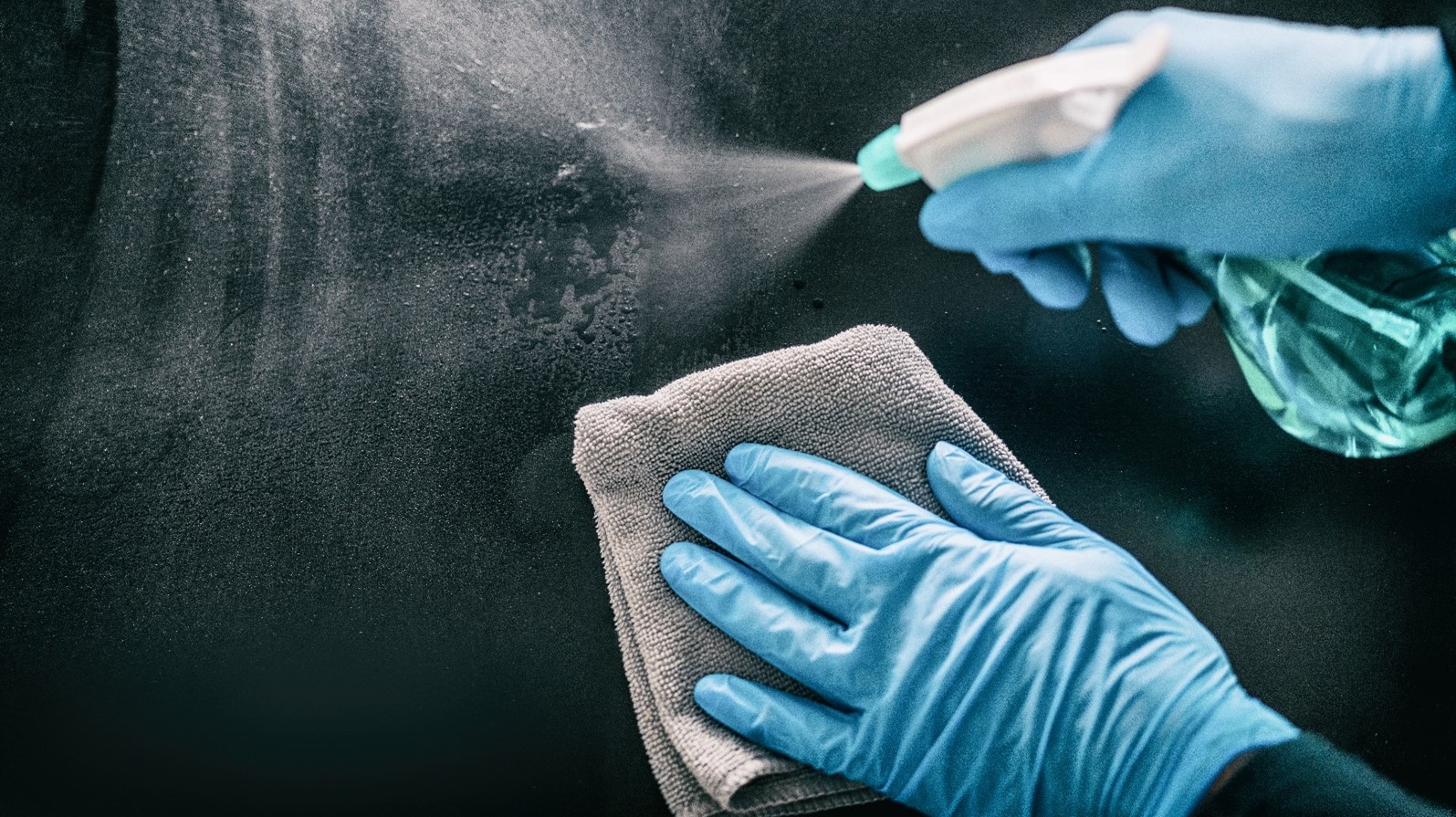
By: Keith Schneringer | July 26, 2022
In this second article of this three-part blog series, we will be explaining infection prevention protocols, and effective disinfecting criteria you can use to combat the hMPXV virus. Before jumping into this second part, be sure to check out the first article that discussed the history, symptoms and methods of transmission of the virus.
Prevention
According to the CDC, there are a number of measures that can be taken to help prevent infection with the hMPXV virus:
- Avoid contact with animals that could harbor the hMPXV virus (including animals that are sick or that have been found dead in areas where hMPXV occurs)
- Avoid contact with any materials, such as bedding, which have been in contact with a sick animal
- Isolate infected patients from others who could be at risk for infection
- Practice good hand hygiene after contact with infected animals or humans – for example, wash your hands with soap and water or use an alcohol-based hand sanitizer
- Use personal protective equipment (PPE) when caring for patients
Surface Disinfectants
At present, the virus responsible for hMPXV is not on any EPA registered product lists, and therefore there is not a disinfectant which can make a specific on-label claim to be effective against this viral pathogen which is still relatively rare outside of Africa.
However, hMPXV does belong to a group of viral pathogens that are more susceptible to being inactivated by disinfectants than other types of viruses, and as previously referenced, the EPA has identified a list of products which are expected to kill the hMPXV virus when used according to the label directions for each of the associated disinfectant products.
WAXIE can provide several broad-spectrum hospital-grade hard surface disinfectants recognized on the EPA List of Disinfectants for Emerging Viral Pathogens that have been shown to be effective against pathogens which are more difficult to inactivate than hMPXV, such as Rotavirus, Rhinovirus, Hepatitis A, Adenovirus, and Norovirus, and therefore these disinfectant products can be used against the hMPXV virus.
When used in accordance with the directions on the label for each associated disinfectant product, each of these hard surface disinfectants listed below have been shown to be effective against the pathogen (or in some instances pathogens) referenced on that page which are known to be more difficult to inactivate than the hMPXV virus – and as a result, the EPA has provided approval to market these products for use against the hMPXV virus.
Each disinfectant product listed has already successfully gone through the protocol for the EPA Emerging Viral Pathogens Guidance and Status for Antimicrobial Pesticides.
List Q: Disinfectants For Use Against Emerging Viral Pathogens (EVP) Such As The HMPXV Virus
On Monday May 23, 2022, the U.S. Environmental Protection Agency (EPA) released a list of EPA-registered disinfectant products that have been qualified for use against the hMPXV virus.
This list of disinfectant products, also referred to as List Q: Disinfectants for Emerging Viral Pathogens (EVPs) includes products which have submitted data to EPA to show that they are effective against pathogens which are harder to kill than the hMPXV virus.
Why Emerging Viral Pathogen Guidance
The EPA developed and finalized this Emerging Viral Pathogen Guidance in 2016 as a result of growing public health concerns in the United States and globally about response to emerging pathogens, and the fact that pre-existing EPA-registered disinfectant product labels are not able to make any specific claims against a new and previously unidentified viral pathogen, or a pathogen which is known but very rare.
Because it is not possible to predict the occurrence or outbreak of any particular emerging viral pathogen, and because any new or rare pathogen is most likely unavailable for testing right away, few, if any EPA-registered disinfectant product labels have typically been able to specify use against a new category of infectious agents. And because testing the efficacy of an EPA-registered disinfectant against a new emerging pathogen can be difficult to accomplish in a timely manner, the Emerging Viral Pathogen Guidance was intended to allow for a more rapid response in the event of an outbreak.
The Emerging Viral Pathogen Guidance outlines a voluntary pre-approval process for making claims against emerging viral pathogens, and in the event of an outbreak, companies with pre-approved products like WAXIE can make off-label claims in technical literature, non-label-related websites, and social media. 
Criteria for Disinfectants to Make Claims Against Emerging Viral Pathogens
In order to be eligible to be included on this list of disinfectants which can make claims against an emerging viral pathogen, the product should meet both of the following criteria:
1. The product is an EPA-registered, hospital/healthcare or broad-spectrum disinfectant with directions for use on hard, porous, or non-porous surfaces.
2. The currently accepted product label (from an EPA registered product as described above in bullet point 1) should have disinfectant efficacy claims against at least one of the following viral pathogen groupings:
a. A product should be approved by EPA to inactivate at least one large or one small non-enveloped virus to be eligible for use against an enveloped emerging viral pathogen
b. A product should be approved by EPA to inactivate at least one small, non-enveloped virus to be eligible for use against a large, non-enveloped emerging viral pathogen
c. A product should be approved by EPA to inactivate at least two small, non-enveloped viruses with each from a different viral family to be eligible for use against a small, non-enveloped emerging viral pathogen
Viral Subgroup Classifications
This approach which considers the viral subgroup classification was taken because the EPA and the CDC recognize that certain microorganisms can be ranked with respect to their tolerance to chemical disinfectants. The Spaulding Classification Model is used by CDC and this model tiers microorganisms in accordance with the level of resistance to being killed (or inactivated) by typical disinfectant products. With this approach viruses are divided into three viral subgroups based on their relative resistance to inactivation.
According to this hierarchy, if an antimicrobial product can kill a small, non-enveloped virus, it should be able to kill any large non-enveloped virus or any enveloped virus. Similarly, a product that can kill a large non-enveloped virus should be able to kill any enveloped virus. As described in the EPA Emerging Pathogen Guidance to Registrants,16 here is an overview of the three viral subgroups:
Small Non-Enveloped Viruses: these viruses can be highly resistant to inactivation by disinfectants. Despite the lack of a lipid envelope, these organisms have a very resistant protein capsid.
Large Non-Enveloped Viruses: these viruses are less resistant to inactivation than small non-enveloped viruses. Although they have a resistant protein capsid, their larger size makes them more vulnerable to inactivation than a small non-enveloped virus.
Enveloped Virus: these viruses are the least resistant to inactivation by disinfectants. The structure of these viruses includes a lipid envelope which is easily compromised by most disinfectants. Once the lipid envelope is damaged, the integrity of the virus is compromised, thereby neutralizing its infectivity.
As summarized in an article in Infection Control Today at the beginning of the COVID-19 pandemic, the general idea of the EPA’s Emerging Viral Protection Guidance is that in order for a disinfectant to be considered effective against an emerging viral pathogen, it must demonstrate efficacy – in other words, have an EPA-approved claim – against viruses that are harder to kill than the specific emerging pathogen in question.
The hMPXV virus is an enveloped virus and therefore it is the easiest virus to inactivate.

This blog series is here to serve and provide you and your facility maintenance team with a better understanding of the hMPXV virus. Being prepared with accurate information and strategies to control and prevent infection goes hand in hand with fostering a clean and healthy environment for your building occupants. In our third and final part of this series, we will guide you through the process of identifying the appropriate disinfectant cleaner and methods you can put into action to combat the hMPXV virus.
WAXIE is committed to helping our customers keep their facilities cleaner, healthier, greener, and safer. That means creating customized cleaning solutions to meet your specific needs, and then providing the ongoing training and support to help you achieve a cleaner and healthier building environment with infection control resources.
Please contact your WAXIE Account Consultant today to schedule a consultation.




